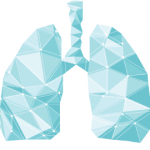Preclinical models have provided important insights into the pathogenesis of OA and potential pathways for therapeutic intervention, including adenosine. Ticagrelor and clopidogrel are both used in patients with coronary artery disease, but only ticagrelor increases extracellular adenosine levels. In this study, treatment with ticagrelor was associated with a 29% lower risk of developing OA than treatment with clopidogrel over five years of follow-up.
Search results for: environment

Fall 2020’s Awards, Appointments & Announcements in Rheumatology
S. Louis Bridges Jr., MD, PhD, Moves to New York S. Louis Bridges Jr., MD, PhD, became the new physician in chief and chair of the Department of Medicine, Hospital for Special Surgery (HSS), New York, on Sept. 1. He will also serve as the chief of rheumatology at Weill Cornell College of Medicine. Prior…

Conquering Systemic Racism in Medicine
2020 has not only borne witness to a global pandemic, but also to increasing fervor in the fight for racial equity. In a wave of opposition to the systemic racism in the U.S., people have been in the streets demonstrating and protesting against social injustice and have taken to social media to promote political action….

Outpatient Medicine in the Post-COVID-19 Era of Telemedicine
Our hospitals have had their finest hour in the care of acutely ill inpatients during the COVID-19 pandemic, including dealing with allocation decisions fairly and transparently, maximizing good outcomes and remaining cognizant of the enduring ethics of healthcare. The honorable traditions of self-effacing conduct and acceptance of some level of personal risk by healthcare professionals…

Familial Patterns in Childhood- & Adult-Onset SLE
A study examining familial patterns of systemic lupus erythematosus (SLE) found a greater decline in SLE recurrence rate by generation in childhood- than in adult-onset SLE, suggesting adult-onset SLE may be characterized by environmental risk factors.
Find Solutions to Navigate Telerheumatology in Your Practice
Experts weigh in on sustaining telerheumatology as a viable practice tool by sharing its history, potential and regulatory outlook post-pandemic at ACR Convergence 2020.

New Classification Criteria Describe Several Hereditary Fevers
Evidence-based classification criteria for rare, hereditary, autoinflammatory fevers have been developed to aid clinicians in better understanding the differences between these rare conditions.

Case Report: A COVID-19 Mimic
A 67–year-old white woman with primary Raynaud’s phenomenon presented following a week of progressively worsening shortness of breath, dry cough and generalized malaise. An avid tennis player, she first noticed dyspnea while playing, but a few days later grew short of breath even at rest. She went to an urgent care center, where a computed…

How to Succeed in a Fellowship & Beyond
For most doctors, fellowship training represents the final two to three years of formal medical education, and recognition of the unique opportunities of this time period can help aspiring rheumatologists get the most out of their fellowship. Fellowship training is inherently different than residency training, with less structured time, smaller teams (often consisting of only…

Measuring & Preventing Diagnostic Errors
In a December 2019 editorial in the Journal of the American Medical Association, the implications of diagnostic error were explored through the story of two parents, both medical professionals, who sought a diagnosis for their sick child.1 Their son saw specialist after specialist and underwent repeated procedures, but for years was left without an explanation…
- « Previous Page
- 1
- …
- 24
- 25
- 26
- 27
- 28
- …
- 102
- Next Page »